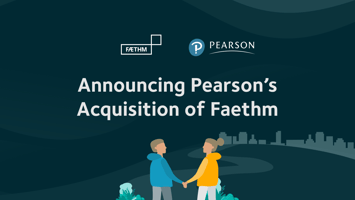Strategic workforce planning is a core function of Faethm, the world’s first AI platform for...
Your strategic workforce planning solutions need to be future-proof
The rapid pace of technological change, demographic shifts and geopolitical instability are putting unprecedented pressure on the world's employers. As a result, companies need to rethink their workforce planning approaches and develop more agile strategies that enable them to respond quickly to changes in the labour market.
Do not rely solely on talent management tools for enterprise workforce planning
People management tools are useful for identifying talent gaps, but they're not strategic workforce planning solutions. These systems don't capture all the data needed to understand the future (e.g., AI and automation) or help you understand the impact of demographic shifts.
Demographic shifts are one of the most disruptive drivers of change today
Aging populations, an emerging middle class in developing economies, and a changing workforce composition are all combining to create new opportunities for businesses. It’s important that your strategic workforce planning solutions keep pace with these trends so you can stay ahead of the curve.
Do not focus on short-term reskilling & workforce planning
We are all familiar with the concept of strategy, and we all agree that it's important to have a strategic workforce planning solution in place. However, what many organizations fail to understand is that they can't just focus on the short term; they need their strategic workforce planning solutions to be future-proof.
In order for your strategic workforce planning solutions not only meet your goals today but also tomorrow and into the indefinite future, you need them to be more than a short-term fix or bandaid solution. This means taking a step back from thinking about how you might react if things go wrong in the near term and instead looking at how things could go wrong later on down the line so as not just build up resilience against those eventualities but make sure they're built into everything else you do as well (which will naturally take longer than simply reacting). It also means identifying which areas of business require reskilling sooner rather than later—and which ones don't—so that those skillsets can be prioritized appropriately when making staffing decisions each year or quarter depending on their importance within an organization's overall mission statement.
Learn from AI pioneers who develop people & business plans together
It’s important to remember that AI is not a strategy. It is a tool, and it can augment the decisions of your workforce, but it cannot replace the intelligence of your people or businesses.
That said, there are ways in which you can use AI to make better business decisions faster than would otherwise be possible. For example, by using machine learning techniques like Deep Neural Networks (DNNs), you can analyze a large amount of data quickly and identify patterns within that data as they emerge—often before humans even notice them! The process works because computers are able to learn from their mistakes in order to make better future decisions; this makes them ideal tools for improving decision-making processes across an organization or industry sector as well as at an individual level when combined with other forms of artificial intelligence such as natural language processing (NLP).
Strategic workforce planning needs to be transparent, actionable and outcomes-focused
-
Transparency: A transparent workforce planning solution enables you to see the whole picture. You know exactly where your people are and what they’re doing, so you don’t have to rely on guesswork or assumptions.
-
Actionable: An actionable workforce planning solution allows you to take action based on the information provided by your solution.
-
Outcomes-focused: Your strategic workforce planning should be outcomes-focused—it should prioritize goals over tasks or processes. For example, rather than requiring employees in human resources (HR) departments just focus on hiring and onboarding new hires every day, an outcomes-focused HR department would encourage them also focus on retaining top performers within their organizations by offering them opportunities for career advancement and professional development opportunities. This is how strategic workforce planning differs from short-term reskilling initiatives; strategic solutions enable organizations not only react quickly when changes happen but proactively anticipate those changes in advance.
To meet rapidly evolving employment challenges, companies need to rethink their workforce planning approaches
Strategic workforce planning is not just about hiring—it's also about reskilling, automation and AI. The latter two can help take some of the pressure off in terms of finding new employees but it will take more than that for companies to thrive in the future
We know that companies are facing unprecedented challenges in their workforce planning. But this is not a new problem and we have seen many of the same issues before. The key is to think strategically about how we will respond, rather than focusing on short-term reactive solutions or quick fixes. It is important to recognise that there will always be change and disruption, but it does not mean we should stop planning for the future altogether.

.jpg?height=200&name=shutterstock_1485132665%20(1).jpg)

